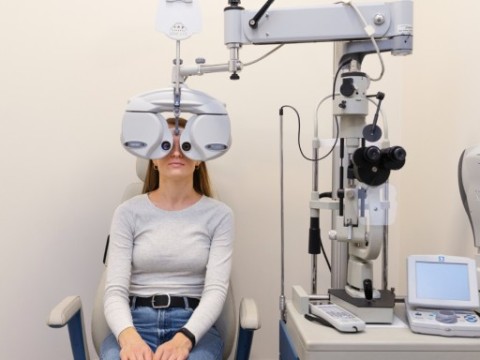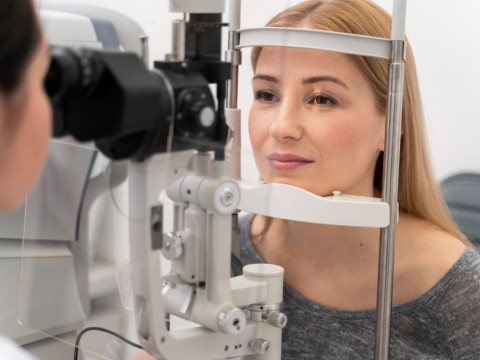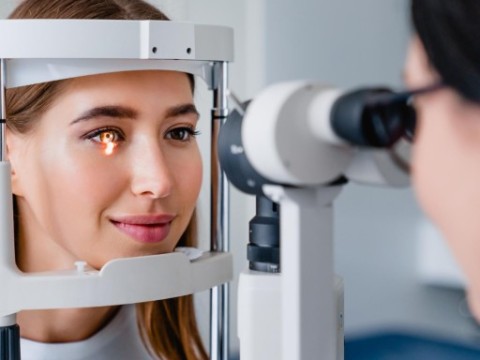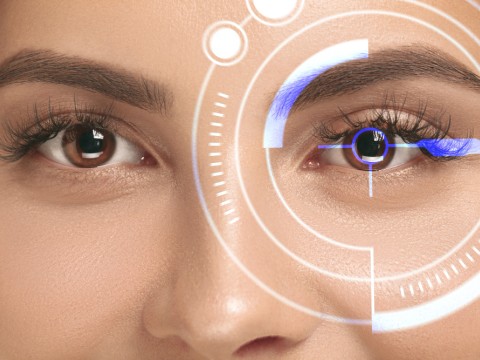Quote of Dünyagöz
i-Lasik (Both Eyes)
Recently, laser eye surgery has become popular among people who want to change their myopia, hyperopia, or astigmatism. The latest technique is i-LASIK; IntraLase Laser-Assisted in Situ Keratomileusis is extremely safe and effective for patients wanting to become free from optical aids. As technology advances in this procedure, more and more are interested in undergoing the surgery due to the various advantages it offers and the high success rate.
Novel combination of femtosecond laser precision with wavefront-guided techniques, constituting four hallmarks constituting the i-LASIK procedure. These not only ensure precision enhancement in the process but also guarantee improvement in the quality of vision which a patient could have post-operatively.
What is i-LASIK Eye Surgery?
i-LASIK is the new concept of laser eye surgery by which some general vision defects such as myopia or nearsightedness, hyperopia or farsightedness and astigmatism can be treated. This surgical method uses two types of lasers, one is used for cutting a thin flap in the cornea and the other is used to reshape the underlying corneal tissue. This clears the route for light sharply to focus on the retina and hence proper vision.
i-LASIK vs Traditional LASIK
Although both i-LASIK and traditional LASIK try to perform mostly the same thing, i-LASIK is far more accurate and safe. Whereas traditional LASIK depends on a microkeratome for the creation of the thin corneal flap, in i-LASIK this is created with a femtosecond laser, which diminishes risks and complications. What really impresses a lot of people is what makes the greater difference between traditional LASIK and i-LASIK.
Possible Side Effects of i-LASIK
As with any form of surgery, there are potential side effects when it comes to i-LASIK. While many patients experience improvement in their eyesight without many complications, some may experience temporary discomfort and dryness of the eyes, or glare in general. Serious complications do not occur often, though all possible risks should be discussed with the surgeon during consultation.
Success Rate of i-LASIK
Success rates for i-LASIK are quite impressive. Through i-LASIK, studies have shown over 95 percent of patients can achieve their desired vision. For many, their quality of life improves as many achieve 20/25 vision or better. Its high success rate lends itself to growing popularity of the procedure.
What to Expect Before the Procedure
Before i-LASIK, there is supposed to be a comprehensive checkup of the eyes of the patient with respect to determining the feasibility of surgery. Such a checkup would contain tests regarding the thickness of the cornea, the shape of the eye, or general features of the eye. Your surgeon will discuss your medical history and any medications you may be taking.
Recovery and Aftercare
Recovery after i-LASIK is generally fast; most patients begin to see an improvement in their vision within a day or two. It is very important to follow the post-operative instructions provided by your surgeon. This may include certain things like eye drop use as directed, avoidance of heavy activities, and follow-up appointments as recommended to check on your progress.
Indeed, i-LASIK is one revolutionary solution for those people who do not want to use any glasses or contact lenses in their everyday life. Advanced technology, excellent rate of success, a few side effects-what more could anyone ask for? Consult with a certified eye surgeon regarding your option to take the first step toward clearer vision if you are considering i-LASIK for yourself.
- Health Insurance
-
Accommodation
- Online Healthy Life Assistant 9/5
- Post - Experience Follow Up 6 Month
-
Extra Privileges
- Transfer

- Health Insurance
-
Accommodation
- Online Healthy Life Assistant 24/7
- Post - Experience Follow Up 1 Year
-
Extra Privileges
- Pre-Treatment Doctor Consultation
- Transfer

 Private
Private
- Health Insurance
- Healthy Life Butler
- Post - Experience Follow Up 2 Year
- World-Famous Doctor Consultation
-
Extra Privileges
No suitable hotel found for the relevant dates!
* Price varies depending on extra and upgrade selections.
Contrary to what is known, Lasik Eye Surgery is a easy and painless treatment method when performed by skilled doctors. In this application, which lasts between 10 and 15 minutes on average, the time the laser is applied to the eye is not even 30 seconds. As a result of Lasik Surgery, there is no change in the anatomical structure of your eye. After the treatment, the person gets rid of the use of glasses or lenses and reaches a comfortable, comfortable and free life standard.
There are some patient-specific criteria for performing LASIK eye surgery: - The age determined for the operation according to the age of progression of the eye numbers is 18 years. - In order for the patient to be included in the scope of surgery, the eye number must be in appropriate values. These values are up to -4 in hyperopia, up to -10 in myopia, and up to -6 in astigmatism. • The number of contact lenses or glasses must not have changed in the last 1 year. There can be other criterias that your doctor will examine to decide on suitability.
Before LASIK eye surgery is performed, patients undergo a comprehensive eye consultation.During this consultation, medical and surgical intervention history is learned and the patient's suitability for the operation is determined.
After the operation, eye watering, burning sensation, blurred vision or itching may occur. However, this situation is temporary and the improvement in vision is completed quickly. One or two days after the operation, your controls are carried out at the follow-up appointment scheduled for you by your ophthalmologist. Recovery duration is 8-10 days.
Diabetic patients are not recommended to be laser due to wound healing and immune system disorders. In diabetic retinal hemorrhages, Argon laser, another laser type, is treated.
Pain, stinging and watering may occur up to 6 hours after laser operations such as Intralase-LASIK and LASIK, which are performed by creating a flap (flap) in the cornea. But after that generally there won’t be a pain.
In most cases, the vision improvement provided by LASIK surgery is permanent. However, in a limited number of cases, myopia, hyperopia, and/or astigmatism may recur over time, causing blurred vision due to changes that may occur in the lens inside the eye, usually with or without LASIK surgery. If such regression occurs and becomes bothersome, a follow-up procedure called LASIK enhancement can usually be performed to restore clear vision.





